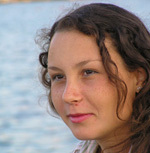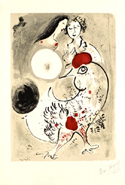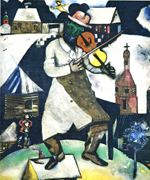 İstanbul has been selected as the 2010 European Capital of Culture by the European Council this year. This must be good news for İstanbul's future in urban living and environmental, social and cultural development. Despite this, some people complain about poverty and the problems of this huge city, such as its traffic congestion, neglected pavements and bins overflowing whenever the sentence is repeated "This week's agenda in İstanbul...” But really, it is enough to look a little bit around to realize that organizations have increased and projects like restoration on historical sites, construction of new art and cultural centers are ongoing. The field of activities includes visual arts, music and opera, cinema, animation, literature, theater and performing arts, traditional arts, and museums and exhibitions. İstanbul has been selected as the 2010 European Capital of Culture by the European Council this year. This must be good news for İstanbul's future in urban living and environmental, social and cultural development. Despite this, some people complain about poverty and the problems of this huge city, such as its traffic congestion, neglected pavements and bins overflowing whenever the sentence is repeated "This week's agenda in İstanbul...” But really, it is enough to look a little bit around to realize that organizations have increased and projects like restoration on historical sites, construction of new art and cultural centers are ongoing. The field of activities includes visual arts, music and opera, cinema, animation, literature, theater and performing arts, traditional arts, and museums and exhibitions.
 As a part of these activities, this semester break I had the chance to see the exhibition of Marc Chagall, a 20th century artist at the Pera Museum, since my teacher recommended it. She had depicted the exhibition with so much delight that I could not help going despite all the bad weather conditions. Really, how much it rained and snowed in İstanbul! And besides, when I learned that "Chagall was not a man of disguises, although sometimes he did apply make-up when painting his own likeness. He did not attempt to conceal his weaknesses, concerns or fears. Neither did he try to glorify himself. His self portraits reflect the way he saw himself throughout his lifetime: as a painter, as an elegant person in his favorite striped jacket; as a self-assured, intelligent young man; his demeanor serious or smiling." It turned out to be a must for me to meet him through his pictures. The name for this past exhibition was called “Life and Love.” It was its first time to be presented in Turkey. Actually, I had a look at his pictures before going. Really, seeing the originals was great. The pictures reflecting the artist's life and his love for his first wife, Bella, has caught my interest more than his illustrations for the Bible or literary works like “The Fables of La Fontaine,” and “Gogol's Dead Souls.” As a part of these activities, this semester break I had the chance to see the exhibition of Marc Chagall, a 20th century artist at the Pera Museum, since my teacher recommended it. She had depicted the exhibition with so much delight that I could not help going despite all the bad weather conditions. Really, how much it rained and snowed in İstanbul! And besides, when I learned that "Chagall was not a man of disguises, although sometimes he did apply make-up when painting his own likeness. He did not attempt to conceal his weaknesses, concerns or fears. Neither did he try to glorify himself. His self portraits reflect the way he saw himself throughout his lifetime: as a painter, as an elegant person in his favorite striped jacket; as a self-assured, intelligent young man; his demeanor serious or smiling." It turned out to be a must for me to meet him through his pictures. The name for this past exhibition was called “Life and Love.” It was its first time to be presented in Turkey. Actually, I had a look at his pictures before going. Really, seeing the originals was great. The pictures reflecting the artist's life and his love for his first wife, Bella, has caught my interest more than his illustrations for the Bible or literary works like “The Fables of La Fontaine,” and “Gogol's Dead Souls.”
As you see the pictures, you notice cock, cow, fiddler, crucifixion of Jesus, horses etc. Although Chagall said, “If a symbol should be discovered in a painting of mine, it was not my intention. It is a result I did not seek. It is something that may be found afterwards, and which can be interpreted according to taste.” You can find the meaning of each symbol with a quick search on the net. Here I list a few of them:
 Cock: Fertility, often painted together with lovers. Cock: Fertility, often painted together with lovers.
Fiddler: In Chagall's town Vitebsk, the fiddler made music at the crosspoints of life(birth, wedding, death).
The Crucifixion of Jesus: an unusual subject for a Jewish painter, and likely a response to the rise of anti-Semitism in Germany in the late 1930s.
And for those interested readers, if by any chance you happen to go to İstanbul between February 16 and April 18, you may consider visiting the Picasso - Suite Vollard, Engravings exhibition which is said to be one of the most marvelous series of engravings of all time.
BY MÜGE TEKİN (IE/IV)
tekin_e@ug.bilkent.edu.tr

|







